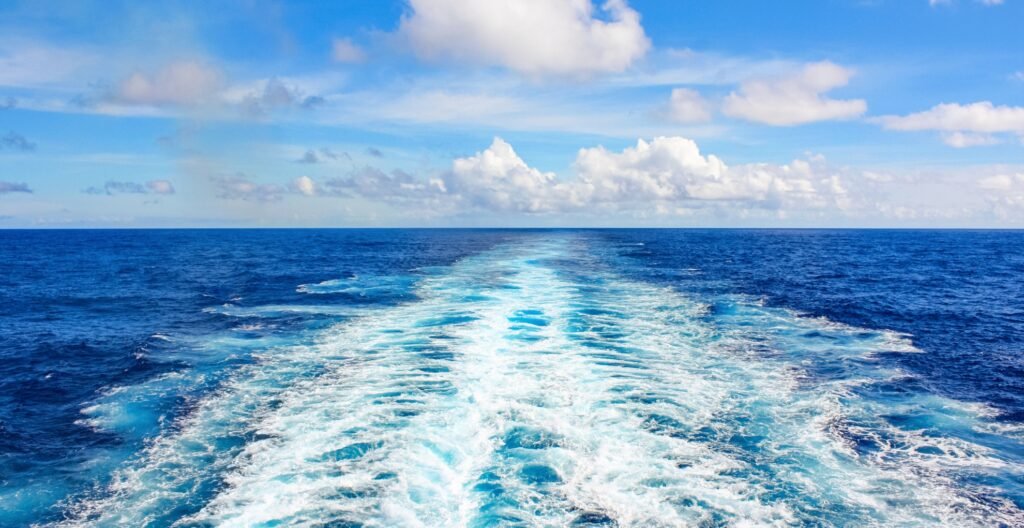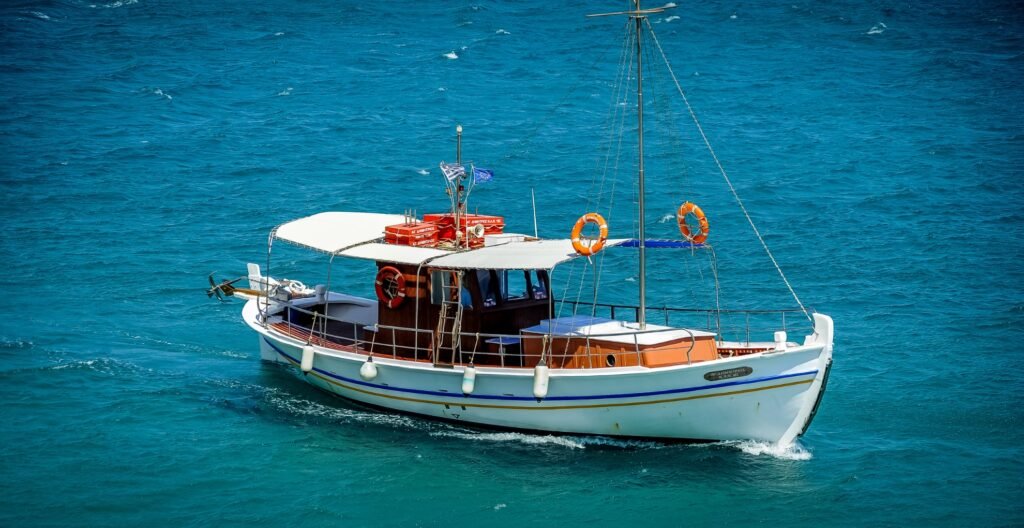Table of Contents
Stepping off a boat and onto the shore, you might find that the ground beneath you seems to rock and sway as if you’re still at sea. This familiar post-cruise sensation can be disconcerting, but you can regain your land legs and balance with the right approach. Let’s explore effective methods to stop rocking feeling after being on a boat.
Embark on a journey to stability by understanding the roots of this unsteady feeling and discovering strategies to counteract it. If you’ve been nodding with a knowing smile, continue reading and learn how to step off the deck and onto dry land with renewed confidence.

Understanding the Post-Boat Rocking Phenomenon
After a cruise or time spent on a boat, many individuals experience a sensation of rocking or swaying when they return to solid ground. This phenomenon, often called “land sickness,” can be pretty bewildering. It’s the result of your body getting accustomed to the boat’s motion, and suddenly, the stillness of land doesn’t quite register as it should.
The body sends conflicting messages to the brain about what is up and down, leading to this sensation of continued motion. It’s a natural response and typically fades as your equilibrium readjusts to the stability of solid ground.
What Causes the Persistent Sway After Disembarking?
Why does this persistent swaying haunt you after leaving the boat? It’s all about your body’s vestibular system, which is responsible for balance. On a boat, this system adjusts to the constant rocking, but once you disembark, it takes some time to recalibrate to the stillness of land.
Environmental cues and sensory information that once matched the rhythm of the sea now conflict with the unmoving earth, causing a sort of sensory confusion that results in the rocking feeling.
The Timeline for Regaining Your Land Legs
Regaining your land legs is a process that varies from person to person. For some, the rocking sensation dissipates shortly after disembarking, while others may find it lingers for a few days. It’s akin to returning to solid ground after spending a considerable time at sea; your body needs to reacquaint itself with the lack of motion.
During this period, your body is hard at work sorting through conflicting messages and re-establishing balance. Patience is vital; for most, the sensation is a fleeting memory. However, if the swaying persists, it may indicate a deeper issue, such as Mal de Débarquement Syndrome.

Strategies to Alleviate the Rocking Sensation
Alleviating the rocking sensation involves a combination of rest, hydration, and creating an environment conducive to re-establishing your body’s equilibrium. Simple adjustments and self-care practices can significantly hasten your return to a steady state.
Rest and Recovery: Nurturing Your Body Back to Balance
The key to overcoming the rocking feeling is allowing your body ample time to rest and recover. This adjustment period is crucial for the vestibular system to recalibrate and for your senses to align with the stillness of the land.
• Emphasize Restful Sleep
Quality sleep is vital for the body to recover from stress, including the disorienting effects of disembarking a boat. During sleep, the brain can process sensory information and reconcile the conflicting signals it receives. Ensuring a restful sleep environment can accelerate the disappearance of the post-boat rocking feeling.
Creating a dark, quiet, and comfortable sleeping area can help facilitate deeper sleep, allowing the body to heal and adapt more efficiently. Embrace this time to recharge, and you’ll likely wake up feeling more grounded with each passing night.
• Hydrate and Nourish with Light Meals
Hydration is a cornerstone of recovery, and drinking plenty of water can help flush out any lingering seasickness and maintain balance within the inner ear and other critical components of the vestibular system—proper hydration aids in the body’s overall functioning, supporting a quicker return to equilibrium.
Complementing hydration with light meals can also be beneficial. Opt for foods that are easy to digest and won’t further tax your body as it adjusts. Fresh fruits, vegetables, and lean proteins can provide the necessary nutrients without overwhelming your system, which may still be sensitive to the motion of the sea.
• The Role of Light Exercise in Restabilization
Light exercises can be surprisingly practical in helping regain balance after a boat trip. Gentle activities such as walking or yoga can stimulate the vestibular system, encouraging it to adapt to a stable environment. These exercises also increase blood flow, which supports overall health and accelerates recovery.
Light exercises should be done cautiously, always listening to your body’s signals. If you feel dizzy or unsteady, take a break and rest. These activities will become easier with time, and your sense of balance will improve.

Environmental Adjustments for Quicker Equilibrium
Making small changes to your environment can also play a role in overcoming the rocking sensation. Aim for calming and stabilizing settings to minimize the symptoms and support your body’s adjustment process.
• Seeking Natural Fresh Air
Stepping outside for some natural fresh air can do wonders for clearing your head and minimizing the symptoms of post-boat rocking. Fresh oxygen can help revitalize your senses, making it easier for your body to recalibrate to the stable ground beneath your feet.
Moreover, connecting with nature and taking in the sights, sounds, and smells of the outdoors can act as a grounding experience, distracting your mind from the sensation of swaying and helping your body to adjust to its new, unmoving environment.
• Maintaining Cool and Comfortable Surroundings
Keeping your environment cool and comfortable can aid in reducing the rocking sensation. A cooler temperature can be soothing and may help prevent any residual feelings of seasickness that often accompany the swaying feeling. Comfortable seating and relaxing spaces can also encourage rest and recovery.
Adjusting lighting, noise levels, and temperature to create a calming atmosphere contributes significantly to your sense of stability. This nurturing environment supports your body’s natural process of re-establishing balance and comfort after time at sea.
• The Importance of Minimizing Alcohol Intake
Minimizing alcohol intake is crucial in the period following a boat trip. Alcohol can dehydrate the body and affect the inner ear, exacerbating the imbalance and prolonging the sensation of rocking. To support your recovery, drink plenty of water and avoid alcoholic beverages until you feel steady on your feet.
Alcohol can also disrupt sleep patterns, which are essential for the body to heal and regain balance. Instead, focus on nourishing your body with hydrating fluids and healthy foods, which will be far more beneficial in helping you find your land legs again.

Recognizing Mal de Débarquement Syndrome (MdDS)
Mal de Débarquement Syndrome, or MdDS, is a condition that may arise after spending time on a boat or ship, and it’s characterized by a prolonged sense of rocking or swaying. It involves a complex interplay between the brain and the inner ear, which has become accustomed to the constant motion of the sea.
The syndrome is relatively rare but noteworthy because it involves a protracted exposure to motion that leads to persistent symptoms even after returning to stable ground. Understanding MdDS is essential for those who experience prolonged discomfort after disembarking, as it may require professional medical intervention.
Identifying Symptoms of MdDS
The vestibular system is central to MdDS, and its dysfunction can result in various symptoms, including the hallmark rocking or swaying sensation. Sufferers may also experience difficulty concentrating and a general sense of unease that can disrupt daily activities.
Physical therapy may be recommended to retrain your brain and alleviate symptoms. Light meals can help manage any associated nausea, while specific exercises may be prescribed to reorient the vestibular system. Recognizing these symptoms is the first step towards seeking appropriate treatment and finding relief.
When to Seek Medical Advice for Persistent Swaying
After acclimating to life on land following a cruise, some individuals may still feel the motion of being on a boat. While this sensation is typically short-lived, persistent swaying that lasts for weeks could indicate Mal de Débarquement Syndrome (MdDS). This rare condition is characterized by a constant feeling of rocking, swaying, or bobbing that can affect balance and daily activities.
If one experiences these symptoms without improvement or if they significantly interfere with daily life, it’s crucial to seek medical advice. A healthcare professional can assess the situation, rule out other conditions, and provide treatment options to help alleviate the uncomfortable sensation and aid in returning to a standard, stable state.

Prevention Tips for Future Voyages
To prevent prolonged discomfort after disembarking, it’s essential to allow the body to readjust to the stable environment gradually. Engaging in pre-voyage exercises that simulate ship motion, choosing cabins in the ship’s center where movement is less pronounced, and moderating drinking alcohol can help mitigate the swaying sensation post-cruise.
• Pre-Cruise Preparations to Ward Off Swaying
Before setting sail, it’s beneficial to prepare the body for the motion of being at sea to minimize post-cruise swaying. Simple balance exercises and spending time on boats or floating docks can help the body adjust to the fluidity of life on land and sea, thus reducing the severity of swaying sensations after disembarking.
• Enhancing Your Sea Legs Before Boarding
Building up one’s sea legs before boarding can be critical to a comfortable cruise experience. Engaging in balance and stability exercises, such as standing on one foot or using balance boards, can train the body’s vestibular system to cope with the shifting conditions at sea. This preparation can help in returning to solid ground without feeling disoriented.
It’s also helpful to familiarize oneself with the ship’s layout and participate in onboard orientations. Understanding and navigating the ship’s design can minimize the conflicting messages sent to the brain when transitioning from the ship’s rocking to the stillness of land.
Onboard Practices to Minimize After-Effects
While onboard, staying active and engaging in activities that keep the body moving and alert to the ship’s rhythm is advantageous. This can help reduce the intensity of the swaying feeling once you are back on dry land.
• Staying Active and Aware of Movement Aboard the Ship
Maintaining an active routine while on a cruise can ease the transition back to land. Participating in shipboard exercises, walking on deck, and dancing can keep the inner ear and brain engaged with the ship’s movements. This awareness can help mitigate the sensation of sudden movements once the voyage concludes.
Additionally, spending time on the outer decks and focusing on the horizon can provide visual cues to the brain, which help it synchronize with the ship’s motion. This proactive approach can lead to a smoother adjustment period after disembarking.

The Reality of Long-Term Adjustment
Returning to life on land after a cruise involves a period of adjustment for the body’s balance systems. This process is relatively quick for most, with normalcy returning within a few hours to days. However, some may experience a more prolonged adjustment period, with sensations of swaying and imbalance lasting for an extended period.
This prolonged adjustment is often a natural part of the body’s recalibration to the absence of the ship’s rocking motion. While it can be disconcerting, it typically does not indicate a severe health issue and will resolve itself as the body reacclimates to a stable environment.
• Typical Recovery Duration for Sea Legs Syndrome
After disembarking from cruise ships, most people regain their land legs within a few hours to several days. The body quickly readapts to the stability of solid ground, counteracting the symptoms of MdDS, which include the feeling of a persistent rocking motion. While the duration of this recovery can vary based on individual sensitivity and the length of time spent at sea, it is generally a quick process.
For those who have cruised through particularly rough seas, the adjustment period may be slightly more extended, but it is still temporary. Only when these symptoms persist beyond a few weeks should one consider consulting a medical professional for advice and potential treatment.
• When Extended Swaying Isn’t Cause for Concern
Occasionally, individuals may experience extended swaying or a sense of imbalance long after their cruise has ended. While this can be unsettling, it’s often not a cause for immediate concern. The body may require more time to recalibrate after being accustomed to the constant motion of the sea.
However, if the sensation significantly impacts daily activities or continues for an unusually long period without any signs of diminishing, it may be prudent to seek medical advice. In most cases, though, time and gentle reorientation activities are all needed to help the body fully readjust to life on land.
Conclusion: How to Stop Rocking Feeling After Being on a Boat
Embarking across the sea, whether to idyllic cruise destinations or on a brief maritime adventure, can leave even seasoned travelers feeling unsteady once back on land. However, understanding the body’s response to the ocean’s rhythm allows a smoother transition.
While hormonal changes in middle-aged women might slightly prolong the adjustment period, treatment options are available to mitigate symptoms effectively. Knowledge of sea sickness and its after-effects empowers individuals to embrace future voyages confidently. With these insights, enthusiasts can disembark with newfound confidence, eager for their next grand excursion on the waves.

Hi, I’m Patricia—a lifelong travel enthusiast with a passion for luxury cruises. Over the years, I’ve experienced some of the world’s most celebrated ships and itineraries, and I love sharing my knowledge with fellow cruise lovers. Whether you’re looking for destination ideas, advice on the best cruise lines, or tips for a smooth sailing, my goal is to help you make the most of your time at sea. With two grown children who share my love for travel, cruising has been a family affair, and I’m here to share what I’ve learned.




